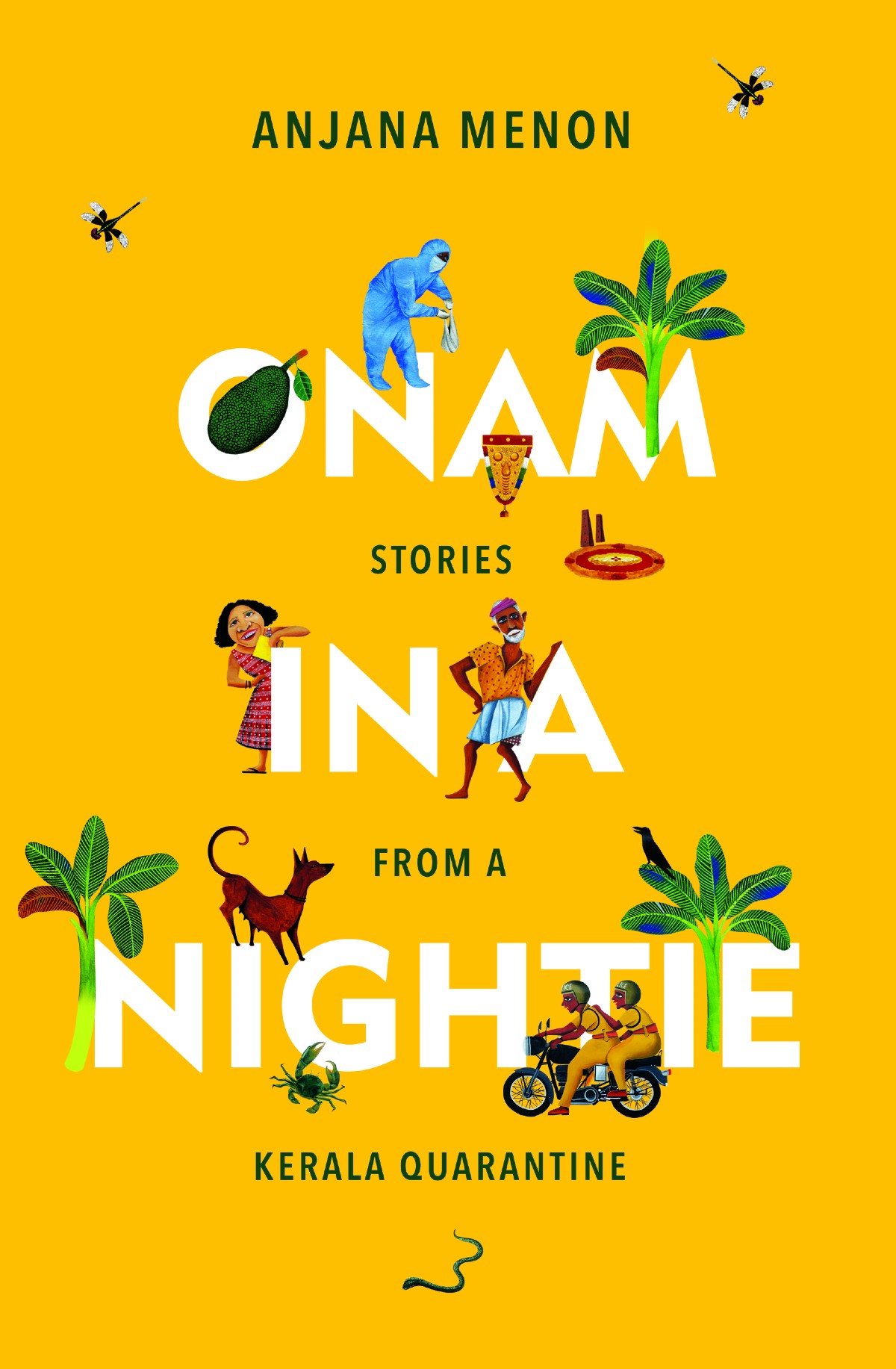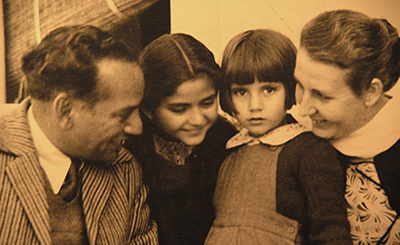
Anjana Menon, author of Onam in a Nightie: Stories From a Kerala Quarantine. Photo courtesy of the author
‘The book started as a journal that I was keeping for myself because the writing brought me joy’.
In her debut book of creative non-fiction, Onam in a Nightie: Stories From a Kerala Quarantine (HarperCollins India), Anjana Menon tells true stories of people living in a Kerala town, Thrissur, whose lives embody hope and resilience. Menon, who studied literature, worked as a journalist in Southeast Asia and Europe, where she was associated with Bloomberg News. She returned to India as one of the founder-editors of Mint and then ran a television newsroom before setting up her own content strategy consultancy. A co-author of What's Your Story? The Essential Business Storytelling Handbook (Penguin Random House), she divides her time between Delhi and London. Excerpts from an interview:
Onam in a Nightie: Stories From a Kerala Quarantine offers us a rare glimpse into the humdrum lies of ordinary characters in Kerala. Did you want to explore the city’s character through the stories of its people?
The book explores the Malayalee character through stories of the people of Thrissur, where the book is set. By just observing the small details, you can very easily put together the bigger picture, about the culture, values and community spirit of Keralites and it opens a window into what makes them different.
The book has 40 accounts of your stay in Kerala during the lockdown. It feels like sneaking into someone's personal diary. Did you want the book to have the structure of a diary?
The book started as a journal that I was keeping for myself because the writing brought me joy. I did not plan on that structure, but I wanted the book to be an honest account, so I let that structure be and it follows a timeline.
As you paint the portrait of the small town and capture the rhythms of lives that populate it, what shines through is the fortitude and optimistic dispositions of these folks. Did you set out to write with some overarching themes?
No, when you write to a theme, you only look for stories that fit and that can become a narrow perspective, and sometimes even a skewed one.
I was merely watching and capturing the things I saw every day and in doing that a few themes emerged, some probably even unknown to me at the time. The narrative explores the questions we grapple with in our everyday lives, from the idea of belonging to what helps us survive tough times.
The lockdown, even though it was tough and sordid, helped many people, especially those who got stranded in different places, to unwind, reconnect, rediscover and reset their lives in many ways. How did it help you?
Writing the book was uplifting and it brought back happy memories of my childhood. Also, when life slows down you live more mindfully, you can see the comedy or even the tragedy of a certain situation more clearly. The pandemic also taught us there is an alternative way to live, with less noise, less hustling, and less consumption, which is perhaps a much better way to live.

Onam in a Nightie: Stories From a Kerala Quarantine, by Anjana Menon, pp. 260, Rs 299
Your preface begins in all caps with a declaration “I HAVE NEVER LIVED IN KERALA.” You had a mandatory quarantine at your parents’ home in Thrissur. Do you think you would have written a story around Kerala irrespective of your long stay there due to the pandemic?
The book is a product of the quarantine. There is no doubt about that. It was not something I had planned, it just happened. It’s impossible to capture the nuances of a place unless you get the time to observe it at an unhurried pace.
The account of your stay in Kerala helps the reader connect with the place, its people, its culture and traditions. Some of these accounts are quite hilarious. How did you decide on the tenor and flow of each of these fragments?
The book wrote itself. As I would sit down to write, it would take me back to an incident from my past or the memory of another place I had lived in. It was like finding the right colours to make a painting come alive. And some of that stuff was truly funny, so I wrote it as I remembered it and because it seemed relevant to that chapter.
Anujath, a 16-year-old, had made 10 paintings that were used in the book as well as on the book cover. How did you go about this creative collaboration?
I had seen an article that showed his painting on mothers (incidentally all in nighties) which had been chosen as the cover of the Kerala government’s gender budget. It was such a refined sensibility that it stayed with me. Here was a kid who was a terrific artist and lived in Thrissur. It somehow ticked all the boxes for me. I was lucky that the head of design at Harper was open to the suggestion and that Anujath found the time to do it. It was easy after that, because he could relate to the incidents and characters in the book.
House helps are an integral part of life in a small town. How would you define the bond with Shivankutty and Maryamma?
Endearing and enduring. It is evident throughout the narrative that they set the terms of engagement with us, so in a way they lead. It’s a give and take, a tussle and a wriggle, like all relationships.
How has your family reacted to the stories so far? You mention them in some chapters. Were there parts that you had to be careful about writing or altogether avoid?
The tone of the book is light, and the episodes involving them poke a bit of fun at them and at me. They have been sporting because it’s ok to laugh at oneself.
You have studied literature and worked as a journalist before setting up your content strategy consultancy. How has your relationship with both been?
I was a business journalist working the most demanding beats in some of the largest financial markets around the world. It was exhilarating, whether it was the Southeast Asian financial crisis or the European telecom meltdown or the bond market crisis and so on.
The content strategy agency is really an extension of all that I learnt in an international newswire — the attention to detail, emphasis on accuracy, tight deadlines, understanding the why of a piece of content, knowing what the audience wants and joining the dots in the policy landscape. So, it's been a seamless transition and it’s helped my firm bag clients who value quality.
Comments
*Comments will be moderated











